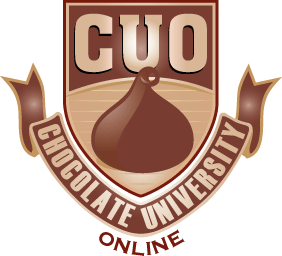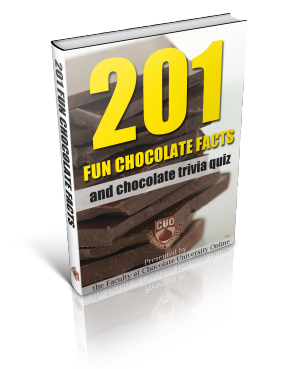Chocolate Wonderland!
Chocolate: Food of the Gods
Chocolate angels sweet and lovely:
A chocolate kiss in the park
The story of chocolate, as far back as we know it, begins more than 2000 years ago in equatorial Central America where the Mayan Indians held cocoa beans in high regard. Images of cocoa pods were carved into the walls of their elaborate stone temples, and Mayan writings refer to cacao as “food of the gods.” It was the Mayans who first created a beverage from crushed cocoa beans which was enjoyed by royalty and shared at sacred ceremonies.
Chocolate’s importance in the Aztec Empire also is clearly recorded. The Aztecs called the prized drink they made from cocoa beans “chocolatl,” which means “warm liquid.” Like the earlier Mayans, the Aztecs drank the unsweetened beverage during special ceremonies. Montezuma II, a royal monarch of the Aztecs, maintained great storehouses filled with cocoa beans and reportedly consumed 50 or more portions of chocolatl daily from a golden goblet. Cocoa beans, however, weren’t only consumed. They also were used as a form of currency. According to records of the time, a rabbit could be purchased for four cocoa beans.
Europe was first introduced to the principal ingredient of chocolate when Christopher Columbus brought a handful of the dark, almond-shaped beans back to Spain from his last voyage to the Caribbean islands in 1502. He presented many strange and wonderful objects from the lands he explored to King Ferdinand and Queen Isabella. Included among them were cocoa beans, placed before royalty as little more than a curiosity. They appeared most unpromising. The King and Queen of Spain never dreamed how important cocoa beans would become. It remained for Hernando Cortes, the Spanish explorer, to grasp the commercial possibilities of cocoa beans.
Chocolate Travels to Spain
Chocolate heart sculpture:
When Cortes arrived in what is now known as Mexico in 1519, the Aztecs mistakenly believed that he was the reincarnation of a former god-king who had been exiled from the land. They did not realize that Cortes was seeking Aztec gold which was rumored to exist. Montezuma greeted the Spanish explorers with a large banquet which included cups of a bitter chocolate drink. By the time the Aztecs realized their mistake, the Spanish had begun to overpower them. Within three years, Cortes and his followers brought about the fall of the Aztec empire.
During this time, Cortes realized the economic potential for cocoa beans. He experimented with chocolatl, adding cane sugar to make it more agreeable to Spanish tastes. He also established additional cacao plantings in the Caribbean region before returning to Spain .
Back in Spain , the new version of chocolatl found favor with the wealthy, and continued to undergo flavor refinements. Newly imported spices, such as cinnamon and vanilla, were added to the drink. Ultimately, someone decided the drink would taste better if served steaming hot, creating the first hot chocolate, which quickly won followers among the Spanish aristocracy. Spain proceeded to plant more cacao trees in its overseas colonies in Ecuador , Venezuela , Peru and Jamaica to ensure an ample supply of cocoa beans. Remarkably, the Spanish were able to keep their ventures in cocoa cultivation and their creation of early cocoa drinks a secret from the rest of Europe for nearly one hundred years.
Chocolate Spreads Across Europe
Chocolate rose beautiful and Delicious!
Spanish monks were assigned the task of processing the cocoa beans. It may have been these monks who let out the secret by discussing cocoa with their French counterparts. Then, in 1580, the first cocoa processing plant was established in Spain . It did not take long before chocolate was acclaimed throughout Europe as a delicious, health-giving drink. For a while it reigned as the chosen beverage at the fashionable Court of France. Chocolate drinking spread across the English Channel to Great Britain , and in 1657 the first of many famous English Chocolate Houses appeared.
Mass production of cocoa became possible with the introduction of a perfected steam engine, which mechanized the cocoa grinding process. By 1730, cocoa had dropped in price from three dollars or more per pound to within financial reach of all.
The invention of the cocoa press in 1828 was another major breakthrough in cocoa production. This not only helped reduce prices even further, but more importantly, improved the quality of the beverage by squeezing out about half of the cocoa butter (the fat that occurs naturally in cocoa beans) from the ground-up beans, leaving behind a cake-like residue that could be further processed into a fine powder. From then on, chocolate drinks had more of the smooth consistency and the recognizable flavorof those enjoyed today.
The 19th Century witnessed two more revolutionary developments in the history of chocolate. In 1847, an English company introduced the first solid eating chocolate made by combining melted cocoa butter with sugar and cocoa powder. This chocolate had a smooth, velvety texture and quickly replaced the old coarse-grained chocolate which formerly dominated the world market. The second development occurred in 1876 in Vevey , Switzerland , when Daniel Peter devised a way of adding milk to chocolate, creating the product we enjoy today known as milk chocolate.
Chocolate Comes to America
In the United States of America , the production of chocolate proceeded at a faster pace than anywhere else in the world. It was in pre-revolutionary New England – 1765, to be exact – that the first chocolate factory was established in this country. During World War II, the U.S. government recognized chocolate’s role in the nourishment and group spirit of the Allied Armed Forces, so much so that it allocated valuable shipping space for the importation of cocoa beans. Many soldie
rs were thankful for the chocolate bars, which gave them the energy to carry on until more food rations could be obtained. Today, the U.S. Army’s Meals Ready to Eat contain chocolate bars and chocolate candies, and chocolate has been taken into space as part of the diet of U.S. astronauts.
Chocolate angel with strawberry:
Chocolate fairy:The queen of the fairytale world made with Delicious chocolate:
Chocolate crying angel:
Chocolate rose with milk:
You would probably feel so guilty to eat one of the previous ones but for this it would be a Crime
(The detail is amazing,true art):Thumb chocolate babies:
Real size Chocolate woman:
This a photo collection of the most beautiful and detailed statues I liked, I hope you enjoyed this article about art chocolate!
Written by marina23
Categories: chocolate articles Tags: CHOCOLATE, Wonderland




